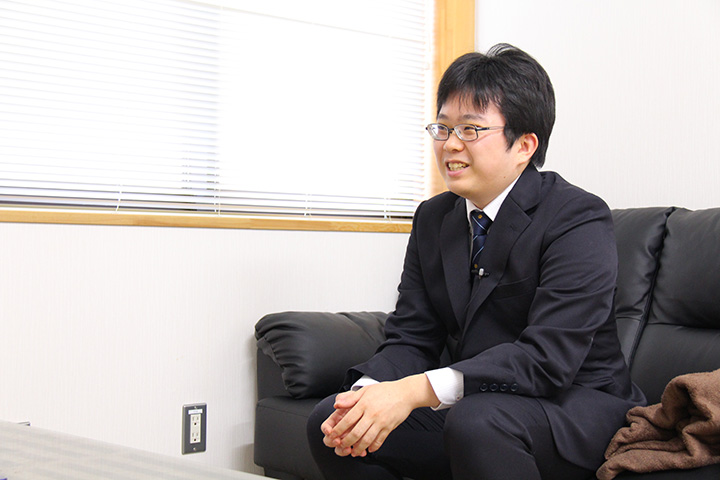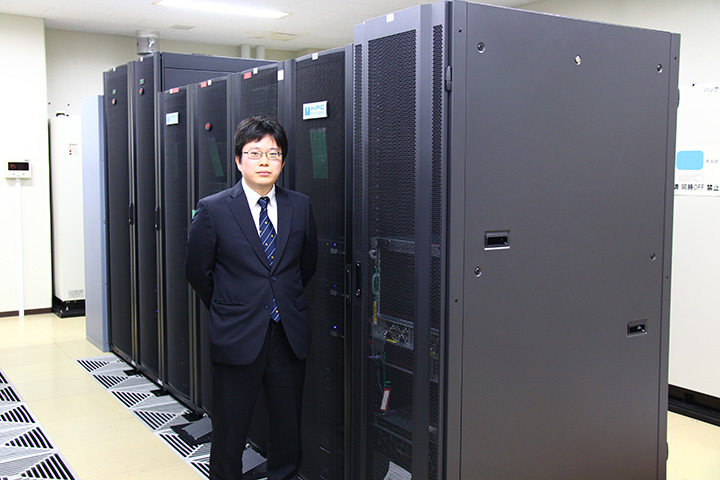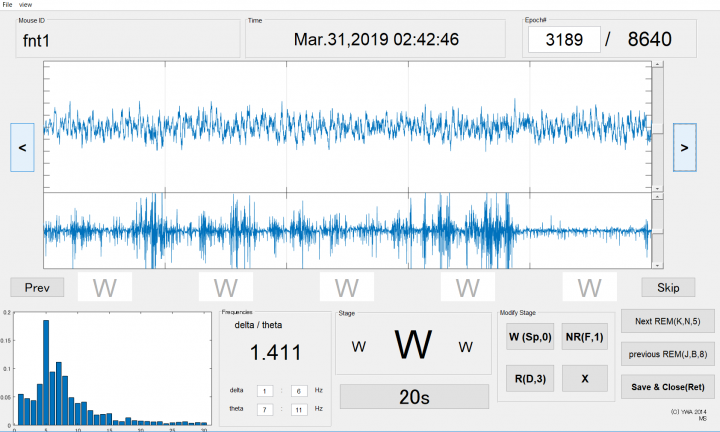TSUKUBA FUTURE
#118 Reproducing the Functioning of the Brain with Computers
Assistant Professor HORIE Kazumasa, Center for Computational Sciences

A massive amount of data processing takes place in the human brain. Artifical neural networks attempt to reproduce this using computers. This area of artificial intelligence (AI) research has been expanding rapidly with the emergence of deep learning technology. Prof. HORIE is working to develop computer programs that can reproduce high level decision making skills in the fields of life sciences and medicine with the same level of precision as humans

Research on AI is booming. It may feel like the latest technology, but this research has actually been ongoing since the 1950s. There were repeated waves where researchers would have ideas, but would end up getting frustrated after exceeding the limits of the technology of the time. We are currently in the middle of a wave that is being called the third boom, and this began with the advent of technology called deep learning. Prof. HORIE is researching artificial neural networks, which are rooted in the theory that the functions of the human brain can be reproduced by computers. The theory itself was proposed when AI research first began, but applications expanded greatly with the emergence of deep learning technology.
In the human brain, data sets received via the five senses are transmitted to countless neurons (nerve cells) as electrical signals. In this process, the data is processed by means such as thinking and perceiving, and is output by the body as a response or behavior. Artificial neural networks are attempts to build mathematical formulas for the complex neural networks of the brain by creating a model of the input/output processing that occurs in individual neurons and connecting large numbers of those neurons together. How individual computations are made and how they are combined are what determines the performance of a system as a whole, and this is what tests the abilities of a researcher.

Inspired by the anime he liked to watch in his school years, Prof. HORIE also researched robot controls.
Prof. HORIE used an artificial neural network to develop a system called MC-SleepNet that automatically classifies the sleep stages of mice. Sleep research is one of the distinguishing research fields of the University of Tsukuba. Sleep occurs in three main stages called wakefulness, REM sleep, and non-REM sleep, that can be differentiated by biological signals, including brainwaves. There are manuals for classifying sleep stages, but they have many complex criteria, and technicians must undergo extensive training to make correct classifications. Prof. HORIE attempted to automate these classifications, which are currently being made by expert technicians.
The approach he used to solve this problem was to program something called a convolutional neural network. In convolutional neural networks, when neurons are connected, they are not given all the data at once, but rather are assigned roles little by little, and localized computations are stacked in multiple layers. It is a fundamental concept in deep learning. With this technique, it became possible to discover noise in the data and ascertain the individual differences between mice.
To improve the accuracy of a system, it is essential to input as much data as possible. Therefore, Prof. HORIE used sleep stage data from 4,200 mice from a sleep research group in his system. These data sets were the fruit of the intensive labor of collecting biological signal data from brainwaves and electromyography during two nights of sleep and classifying the sleep stages one by one for each individual mouse. Such programming requires the creation of teams and division of labor. Through this process, Prof. HORIE's system gleaned a massive body of data—about 40 times that used in previous researchーand made it possible to automatically determine sleep stages with unprecedented accuracy. Prof. HORIE is currently researching applications of this system for classifying sleep stages in humans.
In computational science, research first progresses after encountering a challenge that requires computation. Prof. HORIE learned about the processing of biological signalsーsuch as creating models of muscle movementsーas a university student, which is why he now mainly researches topics related to medicine. His goal is to build a system that allows people to receive state-of-the-art medical care anywhere. Even physicians struggle to make a diagnosis in many cases, and so if an AI system were available that could offer a potential diagnosis out of a vast body of medical data, patients would be able to receive proper treatment without having to go to a major hospital.
Prof. HORIE loved building things even as a child and started programming as a high school student. The first challenge he tackled was the card game poker. He says seeing his work come to life and operate properly after so much trial and error made him happy as a creator. Being able to have fun without spending any extra money beyond having a computer led him to become more and more immersed in the world of programming. Prof. HORIE's research style is to create several potential models for a single objective, and then test those models as much as possible. Apart from the back pain, programming for long periods of time does not bother Prof. HORIE at all. Although AI research may seem glamorous, it involves a lot of drudgery behind the scenes. However, this work is what drives the progress of artificial neural networks.

It is important to be well-versed in the topic of computations. Prof. HORIE finds it enjoyable to learn about various fields every time he tackles a new research topic.

Screen for sleep stage classification using AI.
Article by Science Communicator at the Office of Public Relations



